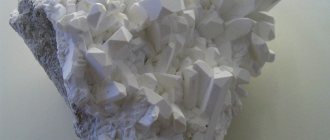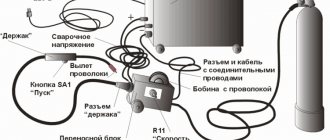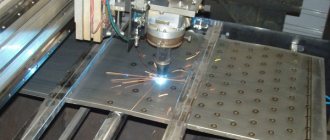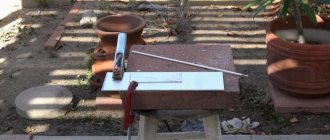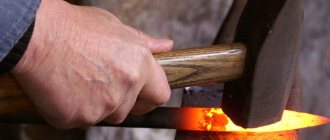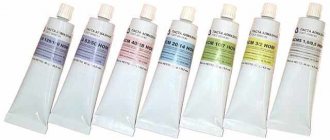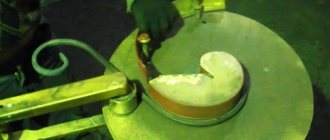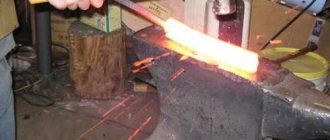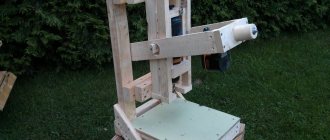Borax (sodium tetraborate) is the sodium salt of boric acid with the formula Na2B4O7. This compound has found wide application, forming variants of crystalline hydrates (crystalline type structure).
In the Asian region the substance is called "tinkal". It is believed that the ingredient got its name from the Persian word for "brown", which was used to name potassium nitrate and other fluxes containing water.
In Ancient Egypt, borax was used to preserve Mummies. Additionally, borax is used to make the glaze of pottery in China, and as a cleaning agent in several places in the Middle East and China.
The substance gained widespread use in the Middle Ages in Europe as a flux for soldering and cleaning the surfaces of metal workpieces. The nature of the origin of the substance has been a long mystery for chemists. Traces of the powder's history were eventually traced to Tibet, almost the only source that was known before the discovery (1776) and application (1820) of boric acid from Italian sources. Italy became the main source of borax until the 1860s, when the desert regions of Chile also began to supply borax for widespread use.
A key figure in the discovery of the ingredient in North America was John A. Veatch, who found it in California in 1856, first in the spring at the northern end of the Sacramento Valley (Tehama County). Over the next decade, borax deposits were found in more exploitable locations in Nevada and Southern California.
American manufacturers mastered the process of using borax by the mid-1880s and supplied the product to domestic and international markets. The price fell to a level that caused the majority to refuse to use the production of such a product. Stephen Mather, to promote the substance in 1896, published a brochure: “Recipes for the Use of Borax.” This successful advertising campaign greatly expanded the demand for borax, which became relatively inexpensive, especially in laundry detergents and glass and ceramic glazes.
Description of the substance
What is borax substance? Many minerals containing sodium tetraborate have been studied. Such deposits include:
- borax or sodium tetraborate tinkal decahydrate;
- kerite;
- Borax sediment is formed during the drying up of salt lakes (Searles, lakes of Turkey);
- minerals belonging to the borate class, containing calcium, sodium and similar elements other than borax.
Varieties of borax
There are two options for this material. In solid form, borax appears as a powder with small granules of a small fraction with a white color. The flux will not spread during application and can be precisely positioned in the required metal-to-metal junction areas.
Diluted borax has also been used for light metals. In some cases, liquids are very convenient, because you just need to dip a small part into the solution. In addition, the liquid form allows the use of borax even at low heating temperatures.
In some cases, it is advantageous to use a mixture of fluxes with borax included in the composition for the special characteristics of the base metal and special requirements for the connection.
Safety and storage rules for borax
The forging drill does not pose any particular danger from the point of view of explosions or fires. Moderate toxicity is observed due to the boric acid content. Borax can enter the body through the respiratory tract in the form of dust or aerosol spray, as a result of which the mucous membranes can be irritated.
Borax should be stored indoors and always in packages - no spills. Typically, storage is carried out in special containers that should stand on a hard surface. The shelf life of borax is only six months, which must be taken into account when planning purchases and use.
Source
Composition and physicochemical properties
| Chemical formula | Na2B4O7. |
| Compound | Sodium tetraborate |
| Coloring | Colorless, white, with grey, blue, green and yellow tints |
| Element hardness | 2-25 |
| Crystal shapes | Tall or short prismatic crystals, usually found in a disorganized, chaotic structure |
| Cleavage | 1,1 |
| Tenacity level | Fragility |
| Properties | Soluble in aqueous media, has a metallic taste |
| Melting temperature | 60 °C |
Borax is a compound of soda and boric acid. This substance does not dissolve in alcohols, but forms solutions well with hot water and glycerin.
Molecular structure of sodium tetraborate
Borax reacts with strong acids to form a salt and boric acid. When heated above 400 °C, the substance is completely deprived of water in the crystals. Borax, as a salt of a weak acid, when mixed with water, creates an alkaline reaction with sodium tetraborate. Borax can react with certain metal oxides to form various compounds - borax pearls.
As a food preservative, borax is prohibited for use in most countries, including Russia, due to the inability of the substance to be removed from human organs as a toxic ingredient. As a food additive, the material is called E-285.
Chemical reactions involving borax
Scope of application of the drill
Sodium tetraborate has been actively used for the following purposes:
- as a flux during soldering and melting of metals;
- in analytical chemistry studies as a standard substance for determining the level of acid in a solution. Borax is also used to establish the characteristics of metal oxides;
- widespread use in the creation of glazes, enamel, glasses for optical instruments and decoration;
- the powder is used in pharmaceuticals and paper production;
- is a natural preservative and means for disinfection and control of parasites;
- is a component in the chemical industry to create household cleaning products;
- relevant application in the creation of cosmetic products;
- borax is used as a base for creating boron;
- the substance is a component for creating insulating building materials;
- in light industry, sodium tetraborate is applied to the product before the painting procedure.
Using a drill in everyday life
Borax can be found in most grocery stores. It is a relatively inexpensive product, making it an excellent choice for many household projects.
Use of sodium tetraborate as a medicine
The substance is very effective in controlling pests: cockroaches, ants and other household insects. The mixture is ready by mixing equal parts of powder with sugar. Sugar helps attract beetles and borax exerts its detrimental effect on the insect. It is recommended to keep the substance in hard-to-reach places, away from pets and children. Optimal places: under stoves, refrigerator and sink. Borax also works well against mice. You just have to apply the powder in the areas where the mice are located, and the borax will rid you of the pests. You can also sprinkle the solution on the carpet and vacuum it to eliminate the presence of fleas or treat the mattress to get rid of bedbugs.
Borax will get rid of rust. Mixing 1 cup of powder with 2 cups of water and 1 tablespoon of lemon juice makes an effective anti-corrosion agent. The paste-like solution is applied to the rusty items for about 15 minutes. After which the rust can be easily removed by mechanical friction.
Sodium tetraborate is a universal cleaner. Two tablespoons of borax are mixed with 2 cups of water to create an all-purpose cleaner. The solution can be applied in a spray bottle and used to clean kitchen surfaces and bathroom tiles and ceramics. Borax is great for removing very stubborn stains. Borax will help remove stubborn stains from the floor.
What is borax
Borax (sodium tetraborate) is the sodium salt of boric acid with the formula Na2B4O7. This compound has found wide application, forming variants of crystalline hydrates (crystalline type structure).
In the Asian region the substance is called "tinkal". It is believed that the ingredient got its name from the Persian word for "brown", which was used to name potassium nitrate and other fluxes containing water.
In Ancient Egypt, borax was used to preserve Mummies. Additionally, borax is used to make the glaze of pottery in China, and as a cleaning agent in several places in the Middle East and China.
The substance gained widespread use in the Middle Ages in Europe as a flux for soldering and cleaning the surfaces of metal workpieces. The nature of the origin of the substance has been a long mystery for chemists. Traces of the powder's history were eventually traced to Tibet, almost the only source that was known before the discovery (1776) and application (1820) of boric acid from Italian sources. Italy became the main source of borax until the 1860s, when the desert regions of Chile also began to supply borax for widespread use.
A key figure in the discovery of the ingredient in North America was John A. Veatch, who found it in California in 1856, first in the spring at the northern end of the Sacramento Valley (Tehama County). Over the next decade, borax deposits were found in more exploitable locations in Nevada and Southern California.
American manufacturers mastered the process of using borax by the mid-1880s and supplied the product to domestic and international markets. The price fell to a level that caused the majority to refuse to use the production of such a product. Stephen Mather, to promote the substance in 1896, published a brochure: “Recipes for the Use of Borax.” This successful advertising campaign greatly expanded the demand for borax, which became relatively inexpensive, especially in laundry detergents and glass and ceramic glazes.
How is the soldering process performed?
Brazing is a process in which two or more metal elements are joined by melting, using a filler metal in the joint that has a relatively low melting point. Soldering is used to form a permanent connection between components. During soldering, only the solder melts, and not the parts of the material that were soldered. Solder is a metallic “glue” that holds parts of materials together.
Soldering copper pipes
If you need to create a flux from borax, you can use boric acid in a 1:1 ratio to work with copper, steel, cast iron or a similar substance. This mixture must be mixed and then the excess liquid must be evaporated to create a dry type of flux. This preparation makes it possible to obtain an active, high-quality flux for processing parts.
Borax soldering is one of the most common solder processing options. The method allows you to successfully install or adjust parts and various mechanisms.
Advantages of using technical drill for soldering:
- such soldering can connect different metals into one element;
- materials can be used with different melting temperatures;
- soldering allows metals to be bonded to non-metallic materials;
- connections created by this method can be destroyed by repeated heating if necessary;
- A special feature of soldering is the absence of melting of the base metal during operation. In this way, the master can avoid warping, changing geometric shapes and other changes;
- borax creates good conditions for soldering parts and setting them;
- powder allows you to achieve high strength.
Benefits of use
Copper pipes as components of pipelines for various purposes are very popular today. In this regard, brazing copper, which uses a flux such as borax, has become a fairly common technological process. The use of this method of connecting copper products allows not only the installation of new pipelines, but also high-quality repairs of those that have already been in use for a certain time.
Borax removes the oxide film from the surface and promotes the spreading of liquid solder
The use of technical borax as a flux when soldering copper has the following advantages.
- Metal parts in any combination can be subjected to high-quality soldering.
- Metal products that need to be joined by soldering can have any initial temperature.
- When using borax, high-quality and reliable connections can be obtained even between metal and non-metallic parts.
- Soldered joints made using this flux can be unsoldered at any time if the need arises.
- When soldering, the base metal does not melt, as happens during welding, which avoids such an undesirable process as warping (and, accordingly, changes in the geometric shape of the products being joined).
- The use of borax allows for excellent adhesion of the solder and the surfaces of the parts to be joined.
- Technical borax, used as a flux, provides high productivity for a process such as capillary soldering.
- The solder joints obtained using this type of flux are characterized by high strength, reliability and durability.
Brazed copper pipes using borax as flux
To understand what factors influence the quality of soldering, you should know the stages of this technological process. The soldering algorithm is as follows.
- The surfaces of parts that need to be connected by soldering must be carefully prepared.
- Contaminants are removed using standard means - brushes, rags, etc. And to remove refractory oxide films from the surface of parts, a flux such as technical borax is used.
- The surfaces of the products to be joined must be heated to a certain temperature, for which a blowtorch is used.
- Liquid solder is introduced into the gap between the parts to be joined, which is also heated using a blowtorch or a regular gas torch.
- The interaction of the heated base metal and liquid solder ensures a reliable solder joint.
- The soldering process can be considered complete at the moment when complete crystallization of the solder occurs.
Features of the soldering process
There are various soldering options. Many of them have a similar operating algorithm.
Submerged Soldering
For a quality connection, the following steps are necessary:
- The solder must be applied to a clean surface that acts as a base. It is necessary to remove any oils, paints, waxes and other impurities using a solvent, steel brush, or fine sandpaper.
- In order for the solder to connect to the tip of the soldering iron, heat it up for a few seconds, and only then apply the solder. Hold the soldering iron like a handle, near the base of the tool.
- Both parts of the workpiece that will be soldered must be hot to form a good bond.
- The tip of the soldering iron heats both sides of the workpieces.
- The solder will not flow well on the heated base metal. Enough solder should be used to form a strong connection.
- Remove the tip from the joint area as soon as the solder begins to flow.
- Do not move the solder joint while the solder is cooling. Do not overheat the connection as this may cause damage. Transistors and some other components may be damaged due to the heat of soldering. The alligator clip can be used as a heat sink to protect these components. By absorbing heat, the alligator clip reduces heat, helping prevent damage.
- Soldering a connection can only take a few seconds, and even an amateur can perform the operation. If the seam looks bad, reheat it and try again. Bad bonds (also called dry bonds) must be melted and remade. Wipe the tip of the soldering iron to clean it. Unplug the soldering iron when not in use.
How to solder copper pipes
Before starting the operation, prepare all the required tools and materials:
- various brushes for cleaning the edges of pipes for soldering;
- tools for monitoring heated workpieces before soldering;
- equipment for thermal heating of workpieces. Most often a gas burner is used;
- Solder, drills as flux and brushes for applying the material are also required.
For the soldering operation with borax, not including the flux preparation step, it can be divided into various stages:
- The master cleans the workpieces from excess dirt and inclusions. Using fine sandpaper, the area where the pipe pieces are joined should be cleaned to a characteristic shine.
- After cleaning with a brush, you can apply borax. The substance must be applied to the outer and inner sides of the joint. Products with a layer of flux are connected at the joint to begin soldering.
- The pipe mass is heated with a gas heat source for at least 20 seconds.
Solder is applied to the contact area and also processed with a melting torch. The solder is distributed evenly throughout the joint area. If the seam passes visual inspection, it can be tested under working conditions.
Coal forges
Furnaces that use coal as fuel are distinguished by their simple design and practicality of use. The design of this type of device consists of the following working parts:
- Roof and walls. For their construction, bricks with fire-resistant properties are used. It can be chamotte or dinas.
- Nest. It is here that the workpieces are heated.
- Umbrella. Consists of curtains, folding type. Its main purpose is to improve the natural traction of the workspace.
- Back wall. Special holes are made in it through which the outgoing air flow is supplied.
- Air valve. By using it, air is supplied to the forge socket.
- Box For its implementation, heat-resistant steel is used. With its help, the inlet and socket are connected.
- Tempered container. It can be made of either brick or steel. Its main purpose is to lower the temperature of workpieces after their heat treatment. Thanks to this, it is possible to eliminate the formation of thermal cracks on them.
- Chimney. Fuel combustion products are removed through it.
If we talk about the disadvantages of a solid fuel forge, we should note the complexity of the ignition process. Ignition becomes more difficult, especially when the forge has been left unused for a long time. To do this, a blacksmith must have certain skills.
Preparing the forge for use should be carried out in the following sequence:
- clean the nest from any remaining ash and burnt coals;
- blow out the chimney and the channels through which air passes using compressed air. You can use a regular vacuum cleaner for this;
- pour some coal into the bottom of the forge nest. In this case, you should pay attention to the fact that the hole located at the bottom of the box must remain open;
- To facilitate the ignition process, it is recommended to place a small rag moistened with firelighting fluid on the surface of the coal. Instead of rags, you can use sawdust;
- when the coal burns well, you can gradually add coal in small portions;
- now you need to open the air supply valve and set it in the middle position;
- as soon as the coal begins to burn out, you can increase the intensity of the air flow;
- When a crust forms on the surface of the coal, you can begin to warm up the workpiece and prepare it for work.
Since the temperature under the crust is higher than on its surface, the workpiece is placed directly under the crust. If the thickness of the crust reaches more than 5-10 mm, it is recommended to destroy it. Otherwise, the level of thermal conductivity becomes lower.
In order for the workpiece to heat up evenly over the entire area, it must be turned over periodically. It is also worth paying attention to the color of the fire. It should be uniform and also have the same color.
Under no circumstances should the metal be allowed to overheat. At the same time, it will be much more difficult to process.
Disadvantages of flux
When working with borax, a characteristic deposit remains on the surface of the base metal, which must be mechanically cleaned off. Borax is susceptible to moisture and should be stored in a dry place. It is necessary to carefully prepare the flux in advance so as not to spoil the product.
Types of soldering flux
Tools and materials
The soldering technology uses a number of components.
- A soldering iron is used to heat joints that are to be soldered. Solder has a lower melting point than the metals that are being joined. Solder melts when heated with a soldering iron.
- Borax acts as a flux to prevent oxidation of the metals that are combined.
- The solder used to join copper pipes has a necessary acid base that is suitable for pipes but is corrosive to electronic connections.
- A stand on which you can hold a hot soldering iron. There are various stands. It is important to always keep the hot soldering iron in place when not in use.
- A sponge or rag that is used to clean the tip of an iron.
- Fine sandpaper used to clean connections before soldering.
- Alligator clips can be used as heat sinks if necessary.
- Burner if pipes are soldered.
Soldering tools
Thus, the use of borax is effective in domestic conditions for cleaning surfaces and parts, and also as an antiseptic. The ingredient is often used for soldering various parts as protection against oxidation and corrosion prevention. Low cost and widespread use have allowed the substance to be used in many areas of industry and installation services.
What is borax
This is a mineral consisting of colorless crystals with a matte sheen, which is mined in the sediments of reservoirs with a high concentration of salts. Widely used for household and industrial needs, including as a high-temperature flux. Solid borax melts at a temperature of 750 - 900⁰C. To obtain a softer flux, it is dissolved in water. Then the melting temperature depends on the concentration of the solution.
Borax is needed to clean parts from oxide and grease films and contaminants. It is used to solder parts made of steel, cast iron, copper and its alloys. In everyday life and in production, workpieces are joined with copper or brass solders, in jewelry - with silver or gold.
Basics of forge and artistic welding
Forge welding is commonly called the technological process of creating a strong connection between metal parts during thermal heating under pressure.
Forge welding is one of the oldest methods of permanently joining metals. Humanity used forge or forge welding for almost three thousand years as the only one for the manufacture of various iron products, until they learned to melt it, having also mastered foundry welding. But with the development of technological progress, other effective ways of joining metals to each other appeared, so forging welding has practically ceased to be used in industrial production.
Basic information
Forge welding is the process of creating a permanent, strong joint by applying pressure to metal blanks that have been preheated in an oven. This type of welding is also called forge welding or forging welding. This method is used to fasten parts made of low-carbon steels, that is, metals with low resistance to deformation.
The forge welding process is quite labor-intensive and has low productivity, so it is not used on an industrial scale. Despite these difficulties, forge welding has been used for a long time in shoeing horses and making agricultural implements. With the help of forging, you can quickly repair (connect) parts in the field - although the impact method does not create a super strong joint, it allows you to temporarily fix the damage.
What is forge welding
Forge welding is commonly called the technological process of creating a strong connection between metal parts during thermal heating under the influence of external pressure. That is, parts of iron blanks at the site of future welding are heated to high temperatures, achieving a dough-like surface state. Then they create pressure by hammer blows on the workpiece lying on the anvil, thereby achieving the creation of a strong permanent connection.
Technologically, forge welding includes the following individual operations:
- mandatory preparation of the welded surface,
- thermal heating to a strictly defined temperature,
- joining the ends of workpieces by forging,
- final forging to give the workpiece the required shape.
One of the most important conditions for successful forge welding is temperature. It must be detected by the color tone of the glowing surface. So, for iron, a temperature of 1300⁰ C has a bright yellow surface color, and when it reaches 1400⁰ C, the metal begins to glow with a bright white hue. Immediately upon reaching the required temperature, it is necessary to perform forging welding, since overexposure will lead to burning of the metal and the formation of a larger layer of scale.
Making a knife from Damascus steel
Materials and tools
You will also need a number of tools for the job. First of all, you need an anvil. It is better to equip a real anvil, but a piece of rail or a large metal sledgehammer will do. You also need a heavy hammer (1-1.5 kg in weight) and a forge capable of maintaining a high temperature. Other required equipment:
Assembling the knife blank
First forging of a knife stack
In addition to a real forge, you can use a homemade one made from an empty gas cylinder. The inside of the cylinder should be lined with a layer of kaolin wool and fire-resistant cement. You can heat up any forge using a gas burner. If it is small, then heating occurs quickly. Afterwards the actions will be as follows:
Next, the workpiece is heated to a higher temperature - forging (about 1300 degrees), and the metal becomes bright yellow. They begin to forge the plates together with blows of medium power. Afterwards, the knife blank is pulled out for bending.
Bending the workpiece
A stack of plates must be forged to a length equal to two lengths of the future knife. It must be stretched evenly so that the thickness remains approximately the same over the entire area of the product. Using a chisel, a transverse recess is made in the center, slightly not reaching the bottom edge (not the entire thickness). Then the knife blank must be bent in half along the mark made, turned over, and forged along the length. The halves should match well at the edges.
initial number of steel sheets * 2 * number of bends (usually 3-4).
At the end of the work, place the knife blank in the groove of the anvil, twist it, then forge it again to a rectangular shape. Before twisting, it should be pierced in the corners to give it some roundness and to prevent the appearance of impurities and inclusions from folds. The temperature in the forge must be consistently high, otherwise the quality of the steel will decrease and the layers will not be firmly bonded to each other.
Model and rough profile formation
The appearance of the knife must be imagined in advance. Which profile is best to choose can be found on the Internet. According to the drawing, you need to start forging from the workpiece; at first it will be rough. It is important to try and make the work finer so that sanding is less difficult. When heated, metal can be “sculpted” like plasticine, so you need to give the product a beautiful appearance.
Profile grinding
Ready profile
Finish the workpiece with a 400-grit file. Using a fine grain will help give the workpiece a finally smooth look. Also at this stage you need to prepare wooden strips for the handle (2 pieces) and rivets for attaching them.
Features of forge welding
Thus, low-carbon steels with a proportion of carbon inclusions of up to 0.6% are welded well; with increasing carbon content, the welding ability of iron significantly deteriorates.
Poor weldability during forge welding is typical for many alloy steels, non-ferrous metals and their alloys. And also all types of cast iron cannot be thermally joined by forging.
The main obstacle to the possibility of combining iron during heating is the formation of a layer of scale on the heated surface, which consists of fairly refractory oxides FeO and Fe3O4, which are unable to melt at the temperatures at which the surface layer begins to soften. In order for these oxides to interfere with the welding processes as little as possible, the future surface to be welded is coated with various acidic fluxes. Basically, table salt, boric acid and calcined borax are used for this. More often, instead of flux, traditional materials are used in the form of simple broken glass and fine river or quartz sand.
Forge welding is a rather complex technological process and requires certain knowledge and skills to carry out. For example, the possibility of forge welding strongly depends on temperature and, if the required limit of thermal melting of the surface layers is not reached, this will lead to lack of penetration, but if the metal is overheated, burnout or even melting will occur, which will not allow achieving a strong and high-quality connection in both cases details.
Disadvantages of forge type welding
When forge welding metals, some serious defects may occur. Some of the most common ones include:
- lack of penetration (results from improper rounding of the ends prepared for welding, poor-quality flux treatment of the products being joined, or the occurrence of secondary scale due to late cleaning of the workpiece from slag);
- burnout (most likely during forge welding, since the temperatures of forging and burnout are approximately the same. For this reason, it is necessary not to lose attention during forging work and remember that this defect cannot be corrected);
- low strength of the weld (occurs due to the fact that the enlarged grains when heating the workpieces may not be crushed during forging. Often, such a defect occurs when there is insufficient metal accumulation in the process of preparing its ends for welding);
- low strength of the seam sections (formed due to the fact that the metal is heated to the forging temperature over a greater length than is required for welding. To avoid this defect, it is necessary to heat only the ends of large thickness to the required temperature);
- inaccuracy of the final dimensions (occurs along the cross-section or along the length of the product. The defect is formed at the stage of preparing drawings - correct planning of future welding and preparation of metal in the required volumes will help to avoid it).
As a result, it is necessary to note the main thing - the forge welding method is suitable if the metals being processed can be joined with a handicraft weld. This type of welding is almost never used in industry, but it is still in demand among manufacturers of small agricultural materials and sculptors who create works from metal materials. The main advantage of forge welding is the simplicity of the technology and the availability of equipment, but this forging method can lead to defects in the processed products.
Forge welding methods
- end-to-end;
- overlap;
- in girth.
The only mandatory condition for such welding methods is the need to make the ends of the workpieces in the form of a convex shape and with significant thickenings at the ends. This is due to the fact that during forge welding (namely, during thermal heating), a slag film is actively formed on the welded surface and in order for the slag particles to be squeezed out during the forging of the workpieces, a convex surface is required. But the thickened welded ends of the workpieces are, first of all, needed for the process technology itself and allow, after forging the welding area, to bring the cross-sectional shape of the workpiece to the specified dimensions.
More technologically complex methods are:
- split welding, for example, for joining steel strips in the manufacture of steel tires for village carts;
- welding with checkers, which was mainly used to create strong connections of large-sized parts.
In the first case, the ends of the strips are specially prepared by pulling and cutting so that they can be connected to the ceiling before welding, and then, after heating to the required temperature, they are welded on both sides using forging.
In the second case, during the preparation of the future welding site, they are made in the form of angles of 30 or 40 degrees, and additional parts for inserts, which are called checkers, are made of the same angular shape. Next, the entire structure is brought to welding temperature and, using a hammer and anvil, the joint is given strength and the desired shape.
Varieties
Forging welding involves the use of different processing methods depending on the shape, size, and type of product. Here are the most popular ones.
- Girth/overlap/butt. Each of the 3 methods involves the contact of the edges of the product - for this they are initially made convex. The main differences between them relate to the angle and inclination chosen for hammer blows.
- Into the cleft This method is good for working with flat sheet metal workpieces. The blanks are pulled along the edges, split at some distance from them, joined along the cuts, and then heated.
- With checkers . The method involves the use of overlays that follow the shape of the ends of the parts. This method is common when working with large-format products.
These are the basic techniques. Forge welding with riveting, in a groove, butt welding is also found - when the part is attached perpendicular to the base.
Areas of application
This welding method is also used in forges to produce various kinds of composite tools, for example, axes, plows and other agricultural implements.
The industrial use of forge welding is gradually losing its position. This comes with a number of significant disadvantages. Such as:
- slow heating,
- relatively weak strength,
- low productivity,
- heterogeneity of precipitation processes,
- demand for qualified craftsmen.
Although there are still areas of industry where forge welding remains in demand. For example, for the production of steel water pipes with a small diameter of up to 100 mm. To do this, strip steel is heated in thermal furnaces and rolled through coils, and at the end of the process it is pulled through special drawing mandrels at high speed, due to which pressure welding of the longitudinal seam of the pipe occurs.
They use industrial forge welding technology to obtain a multilayer steel structure and to produce bimetallic plates by jointly rolling heated workpieces through rollers or pressing in vacuum thermal chambers.
Equipment and consumables
So, to operate a full-fledged blacksmith’s workshop you will have to purchase:
- portable and stationary forge, i.e. a special device for heating metal to the required temperature (in extreme cases, a simple gasoline autogen will do);
- several types of anvils: large and small, one-horned and two-horned, which must be placed in the workshop with special strength;
- blacksmith pliers of different sizes;
- various types of hammers, ranging in size from a good sledgehammer to a plumber's hammer;
- two containers for cooling: one for water, the other for oil.
Additionally, you may need various scrapers, molds, stands, tools for bending workpieces, and much more.
You should definitely take care of fire safety and personal protective equipment, such as glasses, a leather apron and canvas gloves.
Forge welding
Author:
Igor
Date of:
19.03.2017
- Article
- Photo
- Video
Forge welding appeared several thousand years before our era, but due to its advantages it is still used today. Ancient welding methods: forge and foundry are not very different from modern ones, except that with the development of science and chemistry, effective additives and additives appeared, and a large number of alloys based on iron and non-ferrous metals expand their areas of application.
Forge Welding Process
Advantages and disadvantages
First, let's look at the positive factors:
- Forge welding, one of the few methods, allows you to join alloys that are completely incompatible in any other way. In part, it resembles the soldering method, but with the difference that the parts are connected at the molecular level directly to each other, without the participation of soldering material (fluxes and borax are used exclusively for cleaning surfaces from oxides);
- Heating the metal below the liquidus point (ductile metal, but without transition to the liquid phase) and the absence of air access helps to preserve the chemical composition, and, accordingly, the original properties of the steel;
- The technology of end forge welding allows you to return and even improve the original structure by grinding grains and forging voids. With slow cooling, the weld is obtained without the undesirable structure of martensite and bainite and, accordingly, without internal stresses, which subsequently cause destruction;
- There are a large number of modern alloys that can be used in composite products.
Despite such arguments, forge welding is not used on a large scale, why:
- Low productivity due to slow heating and piecemeal execution increases the cost;
- Inaccurate dimensions of the finished product;
- Forge welding limits the number of processed products according to the thickness of the metal, due to uneven heating of the internal part;
- There is a high possibility of damaging the metal: overheating or underheating, which makes it impossible to connect the parts and creates complete dependence on the professionalism of the master;
- There is a big risk when using critical parts made by forge welding.
Forge welding methods
Depending on the shape of the product and purpose, forge welding is carried out in several ways:
- Butt, overlap, girth - for this method, the ends of the welded product are made convex so that as they come closer, slag can be easily removed. The principle of this method is that the parts are in contact with each other, the only difference is at what angle and inclination;
- In splitting - the method is used for sheet iron. At some distance from the ends, the strips are pulled back and cut into 3-5 parts, depending on the width of the sheet, then overlap each other, after which heating and forging are carried out;
- With checkers - used for large parts. The ends are forged at an angle, usually 30-40º, then overlays with the same angle are forged from the same material and placed on the ends. The place is heated and forged.
Forge welding still remains relevant and accessible in rural areas where horse-drawn vehicles are common.
Forge welding methods
Welding technology
When soldering dissimilar alloys, it is necessary to initially heat the alloy that is being heated to higher temperatures. But powder for forge welding is poured onto the surface when heated to no more than 950-1050º C.”
The workpiece is heated in a forge, in a protective atmosphere (not oxidizing), for this purpose the following types of fuel are used: coke, coal with a low sulfur content (the element reduces the strength and increases the fragility of the weld). The coal must burn out, so most of the sulfur burns out along with it, only after that the ends to be processed are heated.
Workpiece heating process
The temperature of forge welding is determined visually, by the shade of the hot metal, and the degree of heating depends on the carbon content in the steel:
- low carbon (up to 0.3%) t-heating 1350-1450º C, characterized by a bright white metal color;
- the higher the carbon content, the lower the t-heating, only 1150º C - the color of the metal acquires a bright yellow tint.
Forge welding is a very delicate matter; you cannot overexpose the workpiece in the forge: as soon as the working parts change color, they immediately take out the workpiece and, having cleaned off the scale with an iron brush, begin to forge it. For novice craftsmen, it will be a good clue what forge metal welding is.
Forge Welding Equipment
Forge welding involves the use of specific equipment:
- Horn. It differs from a conventional oven in the ability to increase the temperature to 1500º C;
- Anvil;
- Sledgehammer and hammer of various weights, the most popular 3-5 kg;
- A container with river sand cleared of impurities, which is installed on the forge to clean the surface of small parts from the oxide film (instead of using fluxes, they are immediately dipped in sand).
Welding materials
Forge welding is most favorable for steels with a carbon content of up to 0.4% and a minimum content of elements such as Si, Cr, Cu, W, V, P, S. But Mn, with its content of up to 0.8%, improves the plastic properties of the metal and has a beneficial effect on the progress of work.
When heated to high temperatures, the surface begins to oxidize, forming FeO, SiO, Al2O3. A film of these oxides turns into an intermediate layer that prevents welding. Forge welding of stainless steel, as well as ball bearing, aluminum, and high-carbon alloys is characterized by a high content of oxides.
To eliminate the negative influence of oxides, forge welding with borax is used, a substance that, when combined with them, forms a slag layer that preserves the surface from further oxidation during heating. Before starting the operation, the slag is removed. Forge welding flux is used to form the slag; its chemical composition may vary depending on the components. Flux melts the oxide film and prevents the creation of new oxides. One of the components of the flux is borax for forge welding; it has a constant chemical composition and can be used independently for low-melting steels.
Safety precautions
Forge welding is, first of all, a dangerous type of activity associated with the use of:
- open fire;
- sparks;
- increased heat radiation;
- chemically active substances - fluxes.
Therefore, the workplace must meet all fire safety requirements and use PPE made from fire-resistant materials. Goggles must be used to protect vision. At the workplace there should be a first aid kit containing first aid:
- panthenol;
- eye drops.
A little more about the structure of forged metal
Forged metal is of the highest quality. In any alloy there is always a large number of deformations that appear during casting, thermomechanical processing, non-metallic inclusions, chemical and dendritic segregation. Forging eliminates many of them:
- Crushes dendritic (uneven, elongated) grains;
- Eliminates voids caused by the appearance of vacancies in the crystal lattice due to chemical heterogeneity of the metal;
- Grinds exogenous non-metallic inclusions, reducing their effect on the structure.
Forge metal welding
Forge welding has the same properties.
Warm it up thoroughly
The parts are heated in furnaces or furnaces. The amount of fuel must be precisely calculated - no more and no less. The best fuel for forging is charcoal and coke. But in practice, ordinary coal is more often used.
Metal parts are loaded into the forge only after the coal has completely burned out, so that sulfur is removed from it, the presence of which has a bad effect on the quality of the compound.
The heating temperature of the parts must be higher than the level at which forging begins. The level of heating temperature in figures depends on the percentage of carbon in the steel: the lower its content in the alloy, the higher the heating temperature must be raised to melt.
For low-carbon steel, heating should be no lower than 1350 - 1370°C, the distinguishing feature is the shining white color of the metal. If the steel contains a high proportion of carbon, heating to about 1150°C is sufficient, the color will then have a yellow tint.
Forge welding flux is added for protection. It's all about the abundant formation of scale due to heating. Flux mixtures protect against this. Flux for forge welding is poured at a precisely designated moment - when the heating level is between 950°C and 1050°C.
The basis of the mixture is fine clean river sand with the addition of 10% borax after good calcination. Borax in sand promotes good slag formation and easy cleaning of metal from impurities in the future.
The thickness of the layer matters: if it is too thick, heating the parts will reduce speed and quality. Therefore, flux for forge welding is poured in an even and thin layer. The addition of borax to the flux mixture is especially important and necessary if low-quality coal is used.
Table of norms for borax.
The flux mixture forms slag, which can drain from the metal workpiece, which is very undesirable. To prevent this, add additional portions of sand to the workpieces - carefully and in moderate quantities.
Iron filings of a soft consistency or ferromanganese are an excellent partner for borax. Sawdust is capable of absorbing carbon from the metal surface under high temperature conditions, thereby significantly improving the quality of the welding process.
If you need to weld parts from different metals or steel grades, then first of all, the metal with a lower proportion of carbon is heated due to its higher melting point. And only then do they begin to work with the second part, the metal of which contains a higher percentage of carbon.
